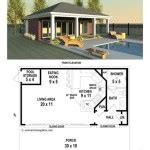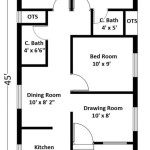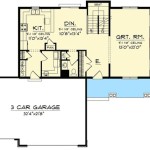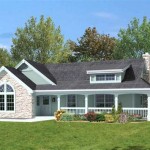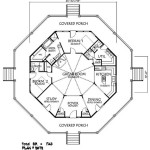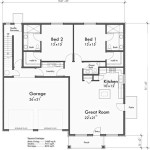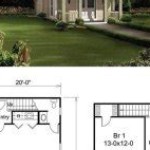Lake House Design Plans are detailed drawings and specifications that guide the construction or renovation of a lake house. They typically include floor plans, elevations, sections, and details, and they provide a roadmap for the entire building process. For example, a Lake House Design Plan might specify the size and layout of the rooms, the type of materials to be used, and the location of the windows and doors.
Lake House Design Plans are essential for ensuring that a lake house is built safely and efficiently. They help to avoid costly mistakes and delays, and they ensure that the final product meets the owner’s needs and expectations. In addition, Lake House Design Plans can be used to obtain building permits from local authorities.
In this article, we will discuss the different elements of Lake House Design Plans and provide tips on how to create a plan that meets your specific needs. We will also provide links to resources that can help you find a qualified designer and builder.
When designing a lake house, there are several important points to consider. Here are 10 key elements to include in your Lake House Design Plans:
- Floor Plan: The floor plan shows the layout of the rooms, including the size and shape of each room, as well as the location of the windows and doors.
- Elevations: Elevations show the exterior of the house from different sides, and they indicate the height and pitch of the roof, as well as the location of the windows and doors.
- Sections: Sections show the interior of the house, and they indicate the height of the ceilings, as well as the location of the walls, windows, and doors.
- Details: Details show specific construction details, such as the type of materials to be used, the size and location of the footings, and the type of roofing material.
- Electrical Plan: The electrical plan shows the location of the electrical outlets, switches, and fixtures.
- Plumbing Plan: The plumbing plan shows the location of the water supply lines, drains, and fixtures.
- HVAC Plan: The HVAC plan shows the location of the heating, ventilation, and air conditioning equipment.
- Site Plan: The site plan shows the location of the house on the property, as well as the location of the driveway, walkways, and other site features.
- Landscape Plan: The landscape plan shows the location of the trees, shrubs, and other plants on the property.
- Erosion Control Plan: The erosion control plan shows the measures that will be taken to prevent erosion on the property.
By including these elements in your Lake House Design Plans, you can ensure that your house is built safely and efficiently, and that it meets your specific needs and expectations.
Floor Plan: The floor plan shows the layout of the rooms, including the size and shape of each room, as well as the location of the windows and doors.
The floor plan is one of the most important elements of a Lake House Design Plan. It shows the layout of the rooms, including the size and shape of each room, as well as the location of the windows and doors. A well-designed floor plan will create a comfortable and functional living space that meets the needs of the homeowner.
- Room layout: The room layout should be designed to maximize the use of space and to create a comfortable and functional living environment. The size and shape of each room should be carefully considered, and the location of the windows and doors should be planned to provide natural light and ventilation.
- Traffic flow: The floor plan should be designed to allow for easy traffic flow throughout the house. The entryway should be spacious and welcoming, and the main living areas should be easily accessible from the entryway. The kitchen should be located near the dining room and living room, and the bedrooms should be located in a quiet area of the house.
- Natural light: The floor plan should be designed to take advantage of natural light. Windows should be placed to provide ample natural light to all of the rooms in the house. Skylights can also be used to bring natural light into interior spaces.
- Ventilation: The floor plan should be designed to provide adequate ventilation throughout the house. Windows and doors should be placed to allow for cross-ventilation, and fans can be used to circulate air in interior spaces.
By carefully considering all of these factors, you can create a floor plan that meets your specific needs and expectations.
Elevations: Elevations show the exterior of the house from different sides, and they indicate the height and pitch of the roof, as well as the location of the windows and doors.
Elevations are two-dimensional drawings that show the exterior of the house from different sides. They are used to indicate the height and pitch of the roof, as well as the location of the windows and doors. Elevations are important for ensuring that the house is built to the correct specifications and that it meets the aesthetic preferences of the homeowner.
When creating elevations, the designer will typically start by drawing the outline of the house. The designer will then add the details of the roof, including the height and pitch. The designer will also add the details of the windows and doors, including the size, shape, and location. In addition, the designer may also add other details, such as the type of siding and trim that will be used.
Elevations are an important part of Lake House Design Plans. They help to ensure that the house is built to the correct specifications and that it meets the aesthetic preferences of the homeowner. By carefully reviewing the elevations, the homeowner can make sure that the house is built to their exact specifications.
Here are some additional details that may be included in elevations:
- The location of the garage and other outbuildings
- The location of decks and patios
- The location of landscaping features, such as trees and shrubs
- The location of outdoor lighting
- The location of any special features, such as a boat dock or a swimming pool
By including all of these details in the elevations, the designer can create a complete and accurate representation of the exterior of the house.
Sections: Sections show the interior of the house, and they indicate the height of the ceilings, as well as the location of the walls, windows, and doors.
Sections are two-dimensional drawings that show the interior of the house. They are used to indicate the height of the ceilings, as well as the location of the walls, windows, and doors. Sections are important for ensuring that the house is built to the correct specifications and that it meets the functional needs of the homeowner.
When creating sections, the designer will typically start by drawing the outline of the house. The designer will then add the details of the interior, including the height of the ceilings, the location of the walls, windows, and doors, and the location of any other interior features, such as fireplaces or built-in cabinets.
Sections are an important part of Lake House Design Plans. They help to ensure that the house is built to the correct specifications and that it meets the functional needs of the homeowner. By carefully reviewing the sections, the homeowner can make sure that the house is built to their exact specifications.
- Ceiling heights: The sections will show the height of the ceilings in each room of the house. This is important for ensuring that the rooms are comfortable and functional. The ceilings should be high enough to allow for proper ventilation and to prevent the rooms from feeling cramped.
- Wall locations: The sections will show the location of the walls in each room of the house. This is important for ensuring that the rooms are laid out in a logical and functional way. The walls should be located to create a good flow of traffic and to maximize the use of space.
- Window and door locations: The sections will show the location of the windows and doors in each room of the house. This is important for ensuring that the rooms have adequate natural light and ventilation. The windows and doors should be located to provide views of the surrounding landscape and to allow for easy access to the outdoors.
- Other interior features: The sections may also show the location of other interior features, such as fireplaces, built-in cabinets, and stairs. This is important for ensuring that these features are installed in a safe and functional way.
By including all of these details in the sections, the designer can create a complete and accurate representation of the interior of the house.
Details: Details show specific construction details, such as the type of materials to be used, the size and location of the footings, and the type of roofing material.
The details section of Lake House Design Plans provides specific construction details that are essential for ensuring that the house is built safely and efficiently. These details include the type of materials to be used, the size and location of the footings, and the type of roofing material. By carefully specifying these details, the designer can ensure that the house is built to the correct specifications and that it meets the needs of the homeowner.
Type of materials: The details section will specify the type of materials to be used for the construction of the house. This includes the type of materials to be used for the foundation, the walls, the roof, and the interior finishes. The designer will select materials that are appropriate for the climate and the location of the house, and that meet the needs of the homeowner.
Size and location of the footings: The details section will specify the size and location of the footings. The footings are the concrete supports that transfer the weight of the house to the ground. The size and location of the footings must be carefully calculated to ensure that the house is stable and secure.
Type of roofing material: The details section will specify the type of roofing material to be used. The roofing material is the protective covering that is installed on the roof of the house. The designer will select a roofing material that is appropriate for the climate and the location of the house, and that meets the needs of the homeowner.
Electrical Plan: The electrical plan shows the location of the electrical outlets, switches, and fixtures.
The electrical plan is an important part of Lake House Design Plans. It shows the location of the electrical outlets, switches, and fixtures, and it ensures that the house has a safe and efficient electrical system.
- Electrical outlets: The electrical plan will show the location of all of the electrical outlets in the house. This includes outlets in the kitchen, bathroom, living room, and bedrooms. The designer will carefully consider the placement of the outlets to ensure that there are enough outlets to meet the needs of the homeowner.
- Switches: The electrical plan will also show the location of all of the switches in the house. This includes switches for lights, fans, and appliances. The designer will carefully consider the placement of the switches to ensure that they are easy to reach and that they are located in convenient locations.
- Fixtures: The electrical plan will also show the location of all of the light fixtures in the house. This includes light fixtures in the kitchen, bathroom, living room, and bedrooms. The designer will carefully consider the placement of the light fixtures to ensure that there is adequate lighting in all of the rooms of the house.
- Other electrical components: The electrical plan may also show the location of other electrical components, such as smoke detectors, carbon monoxide detectors, and security systems. The designer will carefully consider the placement of these components to ensure that they are installed in a safe and effective manner.
By carefully specifying the location of all of the electrical outlets, switches, and fixtures, the designer can ensure that the house has a safe and efficient electrical system. The electrical plan is an important part of Lake House Design Plans, and it should be carefully reviewed by the homeowner before construction begins.
Plumbing Plan: The plumbing plan shows the location of the water supply lines, drains, and fixtures.
The plumbing plan is an important part of Lake House Design Plans. It shows the location of the water supply lines, drains, and fixtures, and it ensures that the house has a safe and efficient plumbing system.
Water supply lines: The plumbing plan will show the location of all of the water supply lines in the house. This includes the lines that supply water to the kitchen, bathroom, laundry room, and other areas of the house. The designer will carefully consider the placement of the water supply lines to ensure that there is adequate water pressure throughout the house.
Drains: The plumbing plan will also show the location of all of the drains in the house. This includes the drains for sinks, toilets, showers, and other fixtures. The designer will carefully consider the placement of the drains to ensure that they are properly connected to the sewer system and that there is no risk of leaks or backups.
Fixtures: The plumbing plan will also show the location of all of the plumbing fixtures in the house. This includes fixtures such as sinks, toilets, showers, and bathtubs. The designer will carefully consider the placement of the fixtures to ensure that they are located in convenient locations and that they meet the needs of the homeowner.
By carefully specifying the location of all of the water supply lines, drains, and fixtures, the designer can ensure that the house has a safe and efficient plumbing system. The plumbing plan is an important part of Lake House Design Plans, and it should be carefully reviewed by the homeowner before construction begins.
HVAC Plan: The HVAC plan shows the location of the heating, ventilation, and air conditioning equipment.
The HVAC plan is an important part of Lake House Design Plans. It shows the location of the heating, ventilation, and air conditioning equipment, and it ensures that the house has a safe and efficient HVAC system.
Heating: The HVAC plan will show the location of the heating equipment, such as the furnace or boiler. The designer will carefully consider the placement of the heating equipment to ensure that it is located in a central location and that it can effectively heat the entire house.
Ventilation: The HVAC plan will also show the location of the ventilation equipment, such as the air ducts and vents. The designer will carefully consider the placement of the ventilation equipment to ensure that there is adequate airflow throughout the house and that there is no risk of mold or mildew growth.
Air conditioning: The HVAC plan will also show the location of the air conditioning equipment, such as the air conditioner and condenser. The designer will carefully consider the placement of the air conditioning equipment to ensure that it is located in a central location and that it can effectively cool the entire house.
Site Plan: The site plan shows the location of the house on the property, as well as the location of the driveway, walkways, and other site features.
The site plan is an important part of Lake House Design Plans. It shows the location of the house on the property, as well as the location of the driveway, walkways, and other site features. The site plan is used to ensure that the house is properly sited on the property and that it meets the needs of the homeowner.
- Location of the house: The site plan will show the location of the house on the property. This includes the distance from the property line, the distance from the road, and the orientation of the house on the property. The designer will carefully consider the location of the house to ensure that it takes advantage of the best views and that it is not located in a flood zone or other hazardous area.
- Driveway: The site plan will show the location of the driveway. The driveway should be designed to provide easy access to the house and to allow for safe and efficient traffic flow. The designer will carefully consider the location of the driveway to ensure that it does not interfere with other site features, such as the landscaping or the septic system.
- Walkways: The site plan will show the location of the walkways. The walkways should be designed to provide easy access to the house from the driveway and other areas of the property. The designer will carefully consider the location of the walkways to ensure that they are safe and accessible, and that they do not interfere with other site features.
- Other site features: The site plan may also show the location of other site features, such as patios, decks, pools, and landscaping. The designer will carefully consider the placement of these features to ensure that they are located in a way that maximizes their use and enjoyment, and that they do not interfere with other site features.
By carefully specifying the location of the house and other site features, the designer can ensure that the house is properly sited on the property and that it meets the needs of the homeowner. The site plan is an important part of Lake House Design Plans, and it should be carefully reviewed by the homeowner before construction begins.
Landscape Plan: The landscape plan shows the location of the trees, shrubs, and other plants on the property.
Purpose: The landscape plan is an important part of Lake House Design Plans. It shows the location of the trees, shrubs, and other plants on the property. The landscape plan is used to create a beautiful and functional outdoor space that complements the house and meets the needs of the homeowner.
Elements: The landscape plan will typically include the following elements:
- Plant selection: The landscape plan will specify the type of plants to be used in the landscape. The designer will consider the climate, the soil conditions, and the aesthetic preferences of the homeowner when selecting plants.
- Plant placement: The landscape plan will show the location of each plant on the property. The designer will carefully consider the size and shape of each plant, as well as its sunlight and water requirements, when determining its placement.
- Grading: The landscape plan will show the grading of the property. The designer will carefully consider the drainage patterns on the property and will grade the property to prevent erosion and to ensure that water flows away from the house.
- Irrigation: The landscape plan may also include an irrigation system. The irrigation system will be designed to provide water to the plants on a regular basis, even during periods of drought.
Benefits: A well-designed landscape plan can provide a number of benefits, including:
- Increased curb appeal: A beautiful landscape can increase the curb appeal of a house and make it more attractive to potential buyers.
- Improved outdoor living space: A well-landscaped yard can provide a comfortable and inviting outdoor living space for the homeowner and their family and friends.
- Increased property value: A well-landscaped property can increase its value by as much as 15%.
By carefully specifying the location of the trees, shrubs, and other plants on the property, the designer can create a beautiful and functional landscape that complements the house and meets the needs of the homeowner. The landscape plan is an important part of Lake House Design Plans, and it should be carefully reviewed by the homeowner before construction begins.
Erosion Control Plan: The erosion control plan shows the measures that will be taken to prevent erosion on the property.
Purpose: The erosion control plan is an important part of Lake House Design Plans. It shows the measures that will be taken to prevent erosion on the property. Erosion is the process by which soil is worn away by water or wind. It can be a serious problem for lake houses, as it can damage the property and pollute the lake.
Elements: The erosion control plan will typically include the following elements:
- Site assessment: The erosion control plan will start with a site assessment. The designer will carefully evaluate the property to identify areas that are at risk for erosion. The designer will consider the slope of the land, the type of soil, and the presence of vegetation.
- Erosion control measures: The erosion control plan will specify the measures that will be taken to prevent erosion. These measures may include:
- Retaining walls: Retaining walls are structures that are built to hold back soil and prevent it from eroding. They are typically made of concrete, stone, or wood.
- Riprap: Riprap is a layer of loose stones that is placed on the ground to prevent erosion. It is typically used on slopes and other areas that are at risk for erosion.
- Geotextiles: Geotextiles are fabrics that are placed on the ground to prevent erosion. They are typically made of synthetic materials, such as nylon or polyester.
- Vegetation: Vegetation can help to prevent erosion by holding the soil in place. The erosion control plan may include measures to establish vegetation on the property, such as planting trees and shrubs.
Benefits: A well-designed erosion control plan can provide a number of benefits, including:
- Prevents property damage: Erosion can damage property, such as buildings, roads, and driveways. An erosion control plan can help to prevent this damage by stabilizing the soil and preventing it from eroding.
- Protects water quality: Erosion can pollute water bodies, such as lakes and rivers. An erosion control plan can help to protect water quality by preventing sediment from entering these water bodies.
- Increases property value: A well-landscaped property can increase its value by as much as 15%. An erosion control plan can help to protect the landscape and increase the property value.
By carefully specifying the measures that will be taken to prevent erosion on the property, the designer can create an erosion control plan that is effective and meets the needs of the homeowner. The erosion control plan is an important part of Lake House Design Plans, and it should be carefully reviewed by the homeowner before construction begins.










Related Posts

